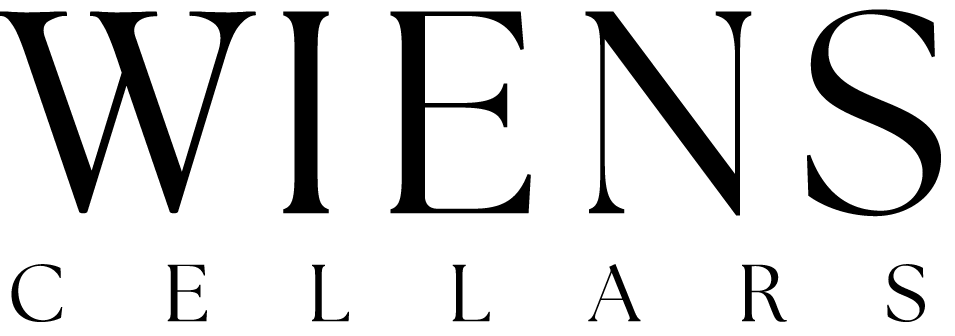Alright, so wine— How do you make it? Good question. Well, they don’t just pick grapes, & let them ferment for a few months… It’s actually a lot more scientific than you may think (& a lot more interesting, too). To make it simple for you (of course when I say you, I also mean me), I’ll break it down into five important steps: Harvesting, Crushing, Fermentation, Clarification, & Aging & Bottling. To make it even simpler, we’ll only talk about red & white wine today because, fun fact: The process varies with each wine type. Let’s get into it!
Step 1: Harvesting
Once veraison (the changing of grape colors) finally occurs, grapes are picked (typically white grapes before red, due to the reduction of acidity that time on the vine can bring) at the discretion of the winemaker. We like white wines at Wiens with lower alcohol/lower sugar at harvest, which in turn means higher acidity, keeping our whites light and crisp.
Step 2: Crushing
Next, the grapes are brought to the winery & de-stemmed. This is another point in the winemaking process that varies from wine to wine. Both red and white grapes initially have clear juice. However, to make a wine red, the grapes need to ferment on the skins, extracting color, flavor, and tannin from the red skins. Because of this, red wine is often kept with the grape seeds & skins when fermenting (“whole berry” fermented), then later pressed & separated from the rest of the grape before aging. In contrast, white wine grapes are often pressed immediately, then put into fermentation tanks for however long the winemaker decides is proper for the wine being made. Ultimately, this step is basically up to the discretion of the winemaker in terms of sequence. The pressure applied when pressing & the time allotted in between steps can result in different tannin levels & tasting notes.
Step 3: Fermentation
Simply put, fermentation in wine is a process often catalyzed by yeast to transform sugar into alcohol. In this step, yeast causes carbon dioxide to be released, which can also affect acidity. However, in the case of red wine, this carbon dioxide causes the skins & seeds to float to the surface of the juice, requiring the winemakers to pumpover (a process resulting in higher intensity tannins) or punch down (resulting in lower intensity tannins) the wine multiple times a day to keep them in closer contact with each other. Fermentation also creates heat. Managing the heat produced during fermentation also plays an important role in the flavors and tannin profile of a wine. Wine can again be fermented up to the discretion of the winemaker.
Step 4: Clarification
This process is basically what gives you a nice, clean wine, free of withheld particles like the yeast & grape skins I mentioned before. First, they rack (transfer from one container to another) or siphon (using a tube relying on gravity & pressure from its placement to essentially perform the same task) the wine, multiple times to properly separate these fragments from the wine. Winemakers often add compounds that bond to these added elements & weigh them down to the bottom of their containers to make the process easier, this is called fining. Filtration can also be used (think of it like straining).
Step 5: Aging & Bottling
After clarification, winemakers can either decide to further age the wine in either oak barrels, stainless steel tanks, or their individual bottles, or to bottle & sell immediately. Yet another step left up to the winemakers to determine. However, these decisions result in nearly endless possibilities & tasting notes later presented in the wine itself.
So, there you have it—an extremely simple version of how to make wine… & that’s only pure white & red wines, not to mention blends, rosé, sparkling, fortified, aromatized, natural, etc.! Even then, there are still so many more steps in between these ones that give you the finished product. It’s both an art & a science, in addition to the passion that our winemakers add, too. Cheers to Joe & Brian for all they do to create a product that you know & love… & are (hopefully) starting to understand, as well!
Bailey Morris, Marketing/ Gift Shop

